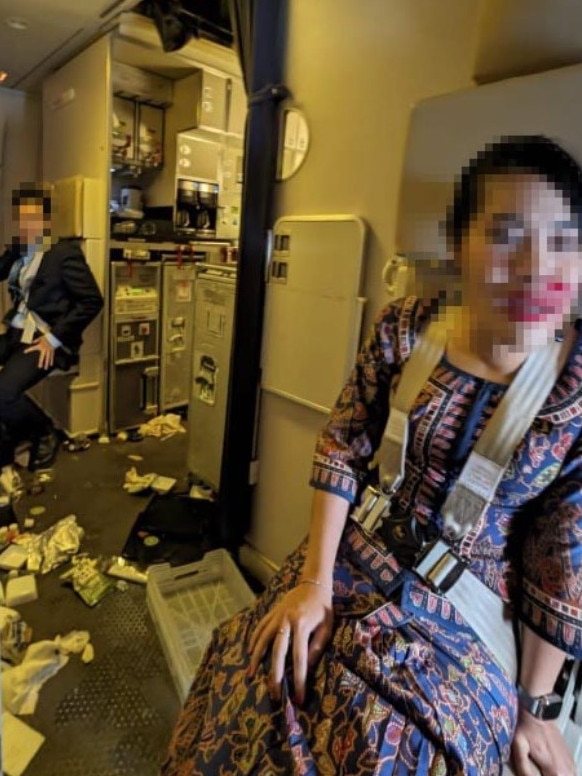Singapore Airlines’ five figure offer to passengers injured on flight SQ321
Singapore Airlines is offering more than $15,000 to passengers injured during deadly turbulence but lawyers say they could be entitled to much more.
Singapore Airlines has offered compensation of more than $15,000 for passengers who suffered minor injuries on flight SQ321, and an initial payment of $37,875 to those were seriously hurt during severe turbulence.
One man died as a result of the incident which saw scores of passengers and crew flung into the roof of the Boeing 777-300ER when it struck turbulence en route from London to Singapore on May 21.
The flight then diverted to Bangkok to seek medical treatment for 79 injured passengers and six injured crew, out of a total of 229 people on board.
They included 56 Australians, 13 of whom were hospitalised.
Three weeks later, 20 people are still in Thai hospitals receiving medical care for broken bones, head and spinal injuries.
In a statement issued on Tuesday, Singapore Airlines said offers of compensation had been sent out to passengers, including a full fare refund for all concerned.

Those assessed as having minor injures were offered $15,150, and those requiring long term medical care were offered an advance payment of $37,875 to cover their immediate needs.
“This will be part of the final compensation these passengers receive,” said the statement.
Singapore Airlines noted that as well as covering the medical expenses of the injured passengers, it had arranged for family members and loved ones to fly to Bangkok where requested.
Although the sums appeared significant, lawyers suggested it would be prudent for passengers to seek legal advice given the Montreal Convention allowed for significantly more compensation.
John Dawson of Vector Legal said the first tier of the convention permitted compensation of up to $257,000 for passengers who were physically injured on airline flights.
The second tier allowed for unlimited damages, providing the carrier could not prove it was not negligent.
Mr Dawson said in the case of SQ321 if the seatbelt sign was up, there may be a defence for Singapore Airlines.
“The damages are meant to be compensatory, that is it’s supposed to reimburse the passengers for injuries and losses they have suffered,” said Mr Dawson.
“There is no compensation for psychological distress or harm.”

Director of Carter Capner Law, Peter Carter, said the payments being offered by Singapore Airlines were from the carrier’s insurer and their objective was to minimise the total compensation bill.
He said the offer of $37,875 for seriously injured passengers to cover interim expenses was a “good move” but he doubted there was anyone on board who did not suffer an injury in one way or another.
“The insurer should clarify if the $15,150 offer covers all passengers including those who endured the terror of the moment but were fortunate to escape physical injury,” said Mr Carter.
“All passengers should seek legal advice before signing anything with the airline. Those with any sort of injury should exercise extreme care and should be evaluated by their own medical specialists to determine how this accident might still affect them.”
He said it was Carter Capner’s “working theory” that the turbulence could have been avoided and “therefore some fault lies with Singapore Airlines”.
“Our team, which includes very experienced airline captains, believes there is evidence to suggest that the aircraft flew through the top of a thunderstorm or in proximity to one as it passed over an area notorious for thunderstorm activity in the Inter Tropical Convergence Zone,” Mr Carter said.
A preliminary report on the incident said the aircraft was “likely flying over an area of developing convective activity” when vibrations were felt.
The report said the pilots called out that the seatbelt sign had been switched on about 8 seconds before a violent upward movement followed by a dramatic drop within 4.6 seconds.







To join the conversation, please log in. Don't have an account? Register
Join the conversation, you are commenting as Logout